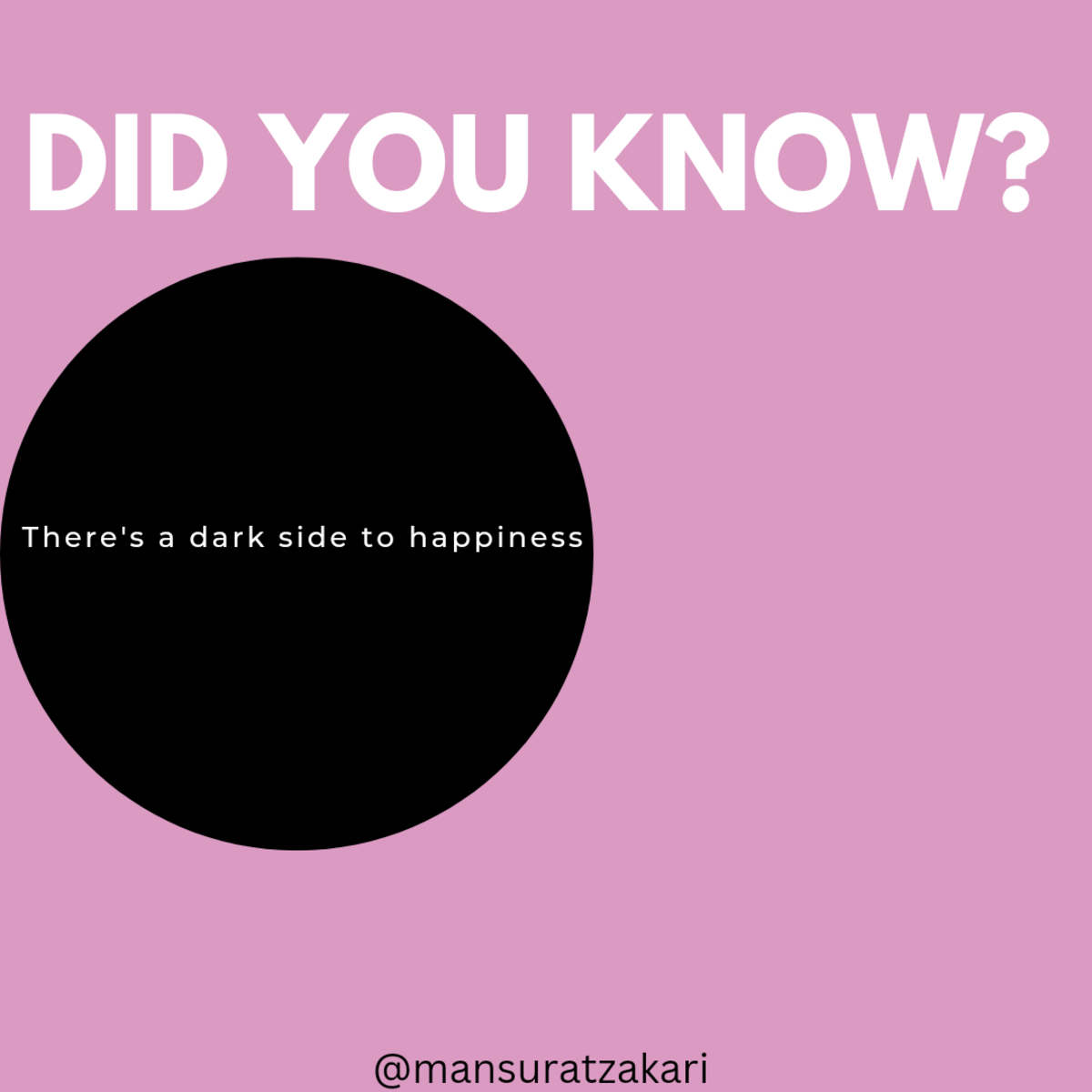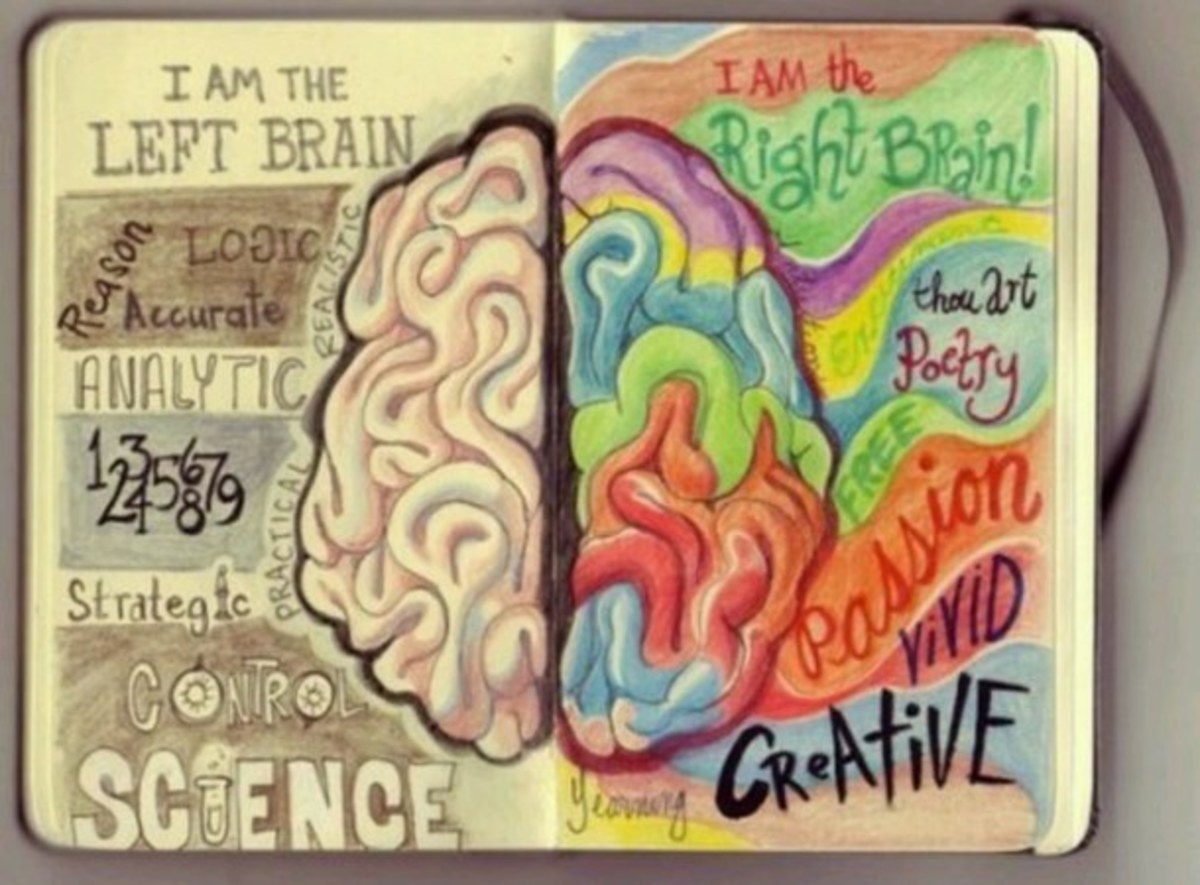- HubPages»
- Health»
- Mental Health»
- Emotions
Happiness Psychology and Biology: Happiness Research Shows What Happens to the Brain When We Are Happy
By applying happiness research findings, more people can enjoy greater life satisfaction. Finding happiness is more than just about feeling good or having positive emotions for the sake of pleasure.
Happiness and other positive emotions can have a powerful influence on your health. They can make your immune system function better and provide a protective effect against some diseases.
By having a greater understanding of happiness, more effective treatments can be created for clinical depression and other mood disorders. The findings from happiness studies and depression research can be useful in decreasing depression as well as increasing happiness. In turn, happier people can become healthier and live longer.
Researchers in different fields of science, including psychology, physiology, neurochemistry and other areas of biology are involved in mapping out how the brain processes different aspects of happiness. Understanding the neurophysiology of feeling good or having positive emotions is just one aspect of happiness research. Scientists are also studying mental states related to happiness, such as, hopefulness, optimism, contentment, anticipation and excitement.
Happiness Psychology: What Is Happiness?
Happiness is a state of well being; this definition of happiness is commonly associated with experiencing pleasure or feeling good.
At this time, little has been understood about what happiness precisely is in a clinical sense. The psychology, physiology and neurochemistry of depression — the extreme opposite of happiness — is much better understood than that of happiness.
Depression has been studied much longer and more extensively than happiness. It wasn’t until after 1998 when research started focusing more on positive psychology. Before this time, about 90% of emotion research focused on the negative mental and emotional states, such as, neurosis, obsessions, paranoia, delusions, anxiety and depression research.
According to Richard Davidson, a professor of psychology and psychiatry at the University of Wisconsin, happiness is a combination of positive emotional states, including contentment, satisfaction, pleasure and joy. It's associated with actively embracing the world and being fully engaged.
The Science Behind Your Smile: Positive Psychology and Happiness Research Have Shown What Happens to the Brain When We're Happy and Experiencing Pleasure

Happiness Biology: What Happens to the Brain When We're Happy?
The precise characteristics of happiness has not been determined in scientific research, but it’s being studied.
Subjects can reliably tell researchers when they're feeling good. So, happiness is being studied by using brain-imaging technologies. Functional magnetic resonance imaging (MRI) shows increased blood flow to active parts of the brain. Electroencephalograms (EEG) can detect a burst of electrical activity inside the brain tissues.
What does this mean?
When research subjects report that they feel good or happy, a part of the brain “lights up” or shows a burst of electrical activity. The greater the stimulation in response to happiness, feeling good or feeling positive emotion, the greater the electrical activity and blood flow in that affected part of the brain.
Studies using these two brain-imaging technologies, functional MRI and EEG, show that the left pre-frontal cortex of the brain is the prime locus of happiness, but the sub-cortex at the bottom of the brain is involved.
A study done by Richard Davidson, a professor of psychology and psychiatry at the University of Wisconsin, showed that when Buddhist Monks experienced bliss as they entered a trance-like state deep in meditation, the left prefrontal lobe of their brain crackled with increased electrical activity at a tremendous rate.
The findings in this study, which was published in the Proceedings of the National Academy of Sciences, suggested that bliss or happiness is not just a vague feeling, but a physical state of the brain. More importantly, this physical state can be induced deliberately; for example, bliss can be induced by experiencing deep meditation.
According to Brian Knutson, an assistant professor of psychology and neuroscience at Stanford, a big part of happiness is looking forward to something. He studies anticipation using MRI to study the brains of test subjects.
Knutson's research on anticipation was inspired by the classic work of Ivan Pavlov, who trained dogs to salivate at the sound of a bell. At first, the dogs only salivated when food was given to them. After a while, the dogs learned to associate the sound of the bell with getting food. They learned to salivate — anticipating that they would get food — just by the sound of the bell.
Instead of food, Knutson used money in his experiments. The test subjects received a small cash payoff if they won a video game. When they looked at the MRIs of the test subjects’ brains just before they got the prize, they saw a burst of activity, which indicated their anticipation of making money. The burst of activity showed up in the nucleus accumbens; this is located in the sub-cortex — at the bottom of the brain. The bigger the prize, the more activation was noted.
According to Knutson, this increase in activation observed can be associated with the kind of happy feelings we experience as excitement.
What is the physical difference between a “happy brain” — one that is experiencing “feeling good” — and one that isn’t happy?
The difference between a happy and not-so-happy brain has something to do with neurotransmitters, the chemicals that carry the signals from one brain cell (called neuron) to another.
Dopamine may be one of the most important neurotransmitters involved in transfer of signals in the brain associated with “feeling good” or happiness; studies in animals have shown that dopamine mediates this transfer of “feel good” signals between the left prefrontal area and the emotional centers in the limbic area of the brain, such as the nucleus accumbens.
Dopamine may be important in aspects of happiness involving moving toward some goal; for example, achievement of a deep meditative state for monks or being allowed to smoke after 24 hours of deprivation for cigarette smokers.
Studies have shown that different neurochemicals may be associated with different kinds of happiness, including physical pleasure. The positive feeling one gets when a goal is achieved, maps onto dopamine while the sensory pleasure of enjoying something, maps onto the opioid system.
By having a greater understanding of happiness, more effective strategies can be created for treating clinical depression and other mood disorders. The findings from happiness studies and depression research can be useful in decreasing depression as well as increasing happiness. In turn, greater happiness and life satisfaction can help people become healthier and live longer.








